The delicate dance of strands, the spring and sway of coils, the gentle cascade of waves—each tells a story. This narrative, etched within our very cells, is the profound meaning of Hair Curl Genetics. It is the intricate science that whispers secrets of our lineage, our resilience, and the captivating diversity of human hair. For Roothea, a space dedicated to celebrating and understanding textured hair, this knowledge is not merely academic; it is a grounding presence, a warm light guiding us to appreciate the unique beauty of every curl, kink, and wave.

Fundamentals
The journey into understanding hair curl genetics begins with recognizing hair as a living extension of our bodies, deeply connected to our identity and heritage. At its simplest, the curl pattern we observe on our heads is largely a predetermined trait, an outcome of the genetic instructions passed down through generations. This is the fundamental explanation of hair curl genetics ❉ the blueprint for your hair’s shape resides within your DNA. Each strand emerges from a tiny pocket in the scalp called a Hair Follicle.
The shape of this follicle is the primary determinant of the hair’s curl. A perfectly round follicle tends to produce straight hair, while an oval or asymmetrical follicle yields wavy or curly strands. The more pronounced the asymmetry of the follicle, the tighter the curl will be.
This genetic programming means that from the moment of conception, the potential for your hair’s unique texture is set. It is a silent language, spoken through proteins and cellular structures, dictating whether your hair will unfurl in gentle undulations, tight spirals, or dense coils. For those with textured hair, particularly within Black and mixed-race communities, this genetic inheritance holds particular significance. It speaks to a shared lineage, a biological connection to ancestors whose hair adapted to diverse climates and environments.
The expression of these genetic predispositions contributes to the rich spectrum of hair types seen globally, making each curl pattern a unique expression of human biological variation. This basic comprehension lays the groundwork for a deeper appreciation of our hair’s inherent nature, inviting us to move beyond superficial categorizations and into a realm of genuine understanding.

The Hair Follicle ❉ A Sculptor of Strands
Imagine the hair follicle as a miniature sculptor, shaping each strand as it grows. The internal structure of the follicle, specifically the distribution of keratin proteins within the hair shaft, is directly influenced by the follicle’s curvature. Hair emerging from a curved follicle will naturally bend and twist as it grows, giving rise to its characteristic curl. This architectural design, established at the follicular level, remains constant throughout the hair’s life cycle.
Beyond the follicle’s shape, the angle at which the hair emerges from the scalp also contributes to the curl’s formation. Hair that grows straight out of the scalp maintains a linear path, while hair that exits at an angle develops bends and twists. This interplay between the follicle’s internal geometry and its emergence angle accounts for the varied curl patterns observed, even within a single head of hair. It is not uncommon for individuals to discover tighter curls at the nape of their neck and looser waves around their crown, a testament to the localized genetic expressions within the scalp.
The hair follicle’s shape and the angle of hair emergence are fundamental genetic determinants of hair curl patterns.

The Role of Bonds in Hair Structure
At a microscopic level, the physical shape of a hair strand is maintained by various chemical bonds within its protein structure. The most significant of these are Disulfide Bonds. These are strong, permanent connections that form between sulfur atoms in the keratin protein, which is the primary building block of hair.
The number and precise arrangement of these disulfide bonds directly influence the hair’s curvature. Hair with a higher density of disulfide bonds, strategically placed, tends to exhibit a tighter curl pattern, while fewer or more scattered bonds result in looser waves or straight hair.
Another type of bond, Hydrogen Bonds, also plays a role in how hair behaves, particularly in response to moisture. These temporary bonds form between water molecules and the hair’s keratin structure. They are responsible for the temporary changes in curl that occur with humidity or styling, such as when curls spring to life in a humid environment or lose their definition after exposure to rain. While hydrogen bonds offer flexibility, it is the enduring presence of disulfide bonds that defines the hair’s intrinsic genetic curl.
Understanding these fundamental elements of hair curl genetics offers a foundational perspective. It helps us appreciate that our hair’s texture is not a random occurrence but a deeply rooted biological characteristic, shaped by millennia of genetic inheritance and cellular precision. This initial understanding provides a gentle entry point into a more profound exploration of textured hair, fostering a sense of wonder and respect for its inherent qualities.
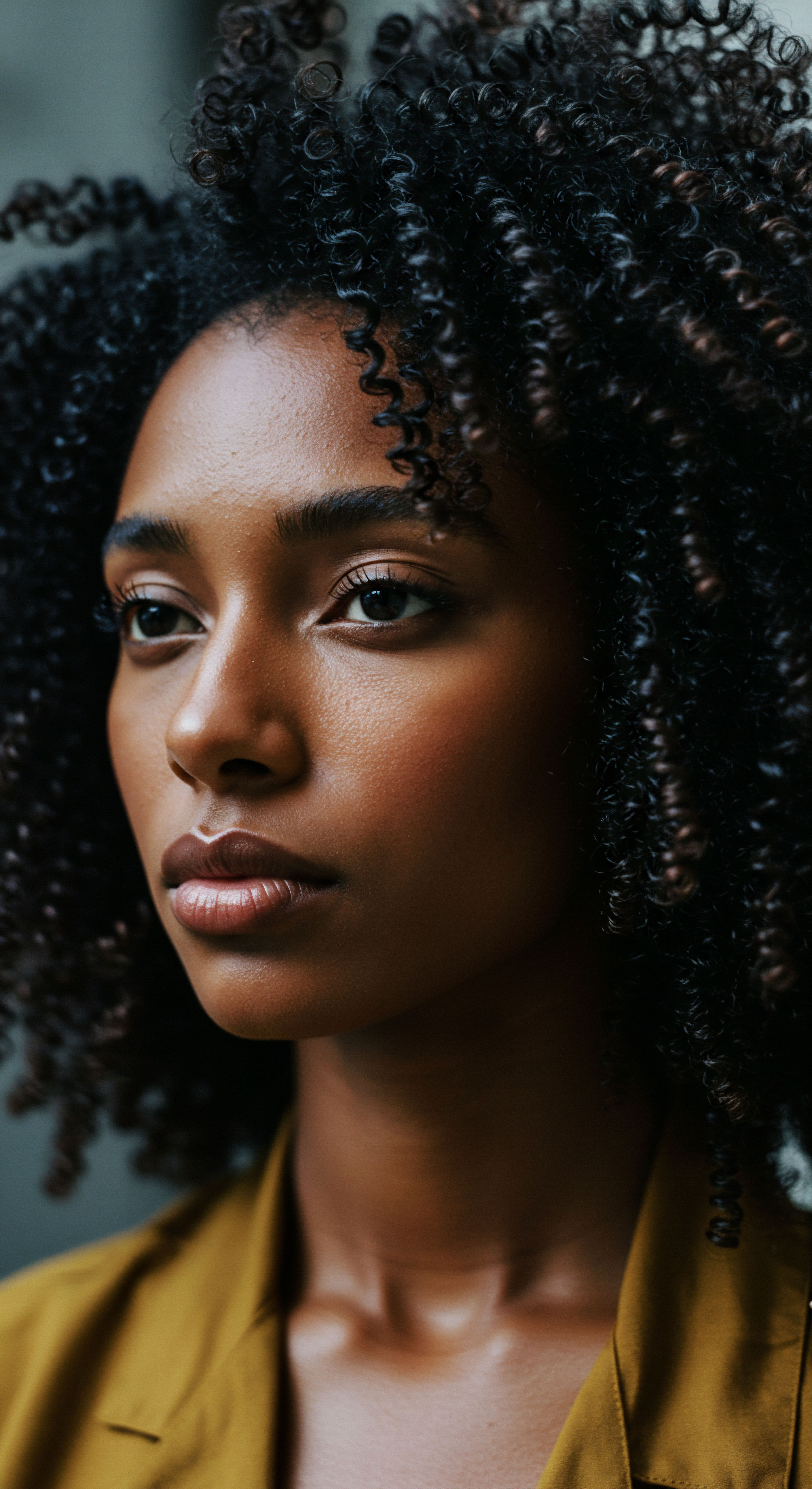
Intermediate
Moving beyond the basic explanation, the intermediate understanding of hair curl genetics delves into the specific mechanisms and broader implications of these inherited traits, particularly for those navigating the unique care requirements of textured hair. Here, the meaning of hair curl genetics expands to encompass the interplay of multiple genes, the physical characteristics of the hair shaft, and the environmental factors that can influence how these genetic predispositions are expressed in daily life. It is a clarification that helps us move from simply observing curl to truly comprehending its origins and behaviors.
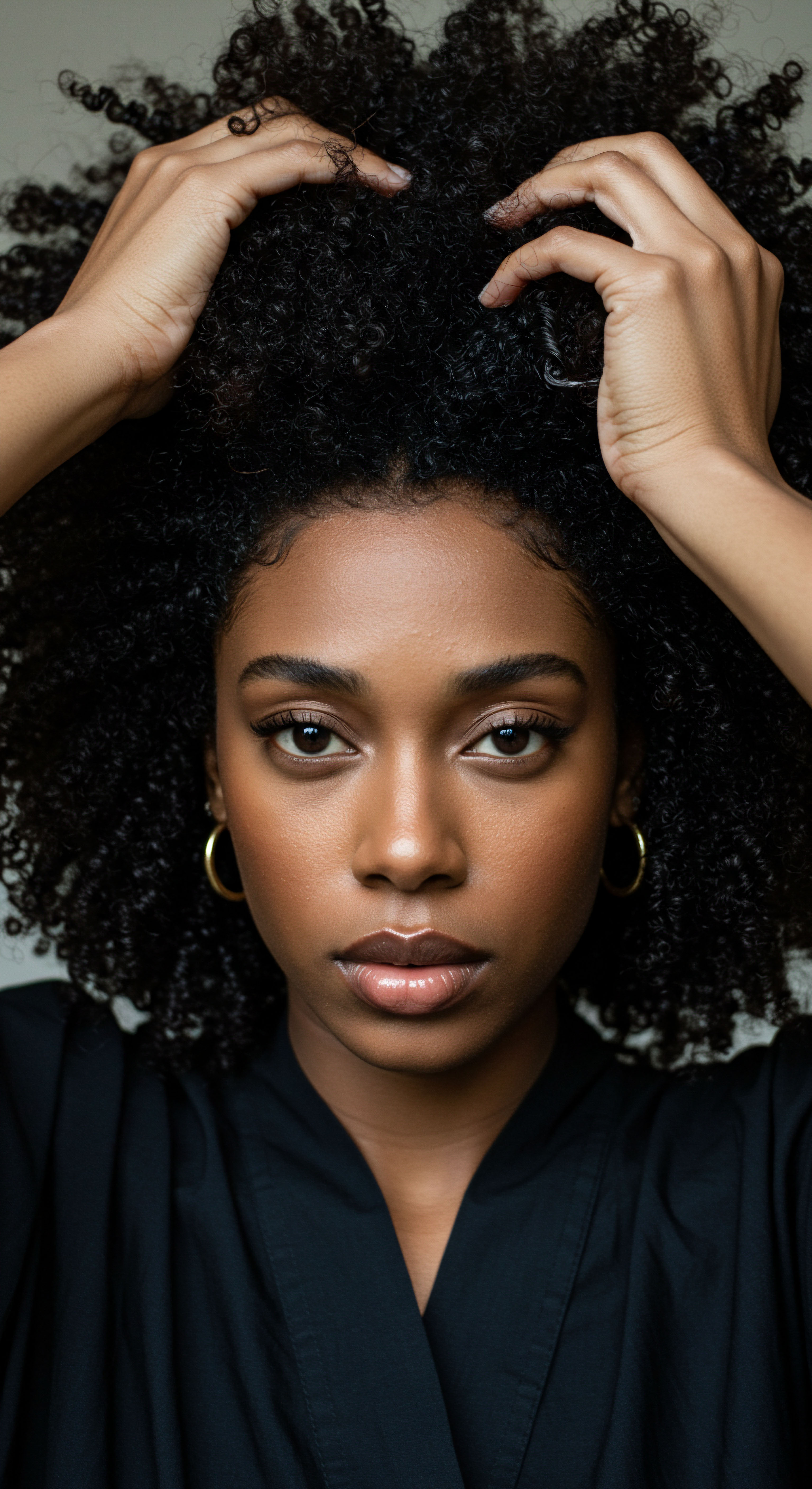
Genetic Influences on Hair Shape
While the follicle’s shape is the primary determinant, specific genes orchestrate this development. Research has identified several genes that play significant roles in dictating hair fiber shape across diverse human populations. For instance, the TRICHOHYALIN (TCHH) Gene is recognized for its involvement in cross-linking keratin filaments, contributing to the hair’s mechanical strength and overall shape.
Another gene, FGFR2, has been linked to hair thickness variations, particularly in Asian populations, though its influence on curl is also being explored. These genetic markers do not work in isolation; rather, they form a complex network, with variations in one gene often influencing the expression of others, leading to the wide array of curl patterns we see.
Consider the spectrum of textured hair, from loose waves to tight coils. This rich variation is a testament to the nuanced expression of these genetic factors. It highlights that even within families, siblings can exhibit distinct curl patterns, underscoring the subtle yet powerful influence of allelic combinations inherited from parents. This level of understanding helps individuals with textured hair to recognize that their unique pattern is a precise genetic signature, deserving of tailored care and appreciation.

Physical Characteristics of Textured Hair
Textured hair, especially Afro-textured hair, possesses distinct structural variations that influence its care and behavior. Its cross-sectional shape is typically elliptical, often exhibiting a retro-curvature at the hair bulb, which results in an asymmetrical S-shaped hair follicle. This unique geometry, genetically determined, impacts how sebum, the natural oil produced by the scalp, travels down the hair shaft. Straight hair, emerging from a round follicle, allows sebum to coat the strand more easily, while the curves and bends of textured hair can hinder this natural lubrication, often leading to dryness.
Furthermore, Afro-textured hair generally displays a higher density of disulfide bonds, which contributes to its unique structure and elasticity. However, this higher density of bonds and the hair’s inherent curvature also render it more vulnerable to mechanical stress and breakage compared to straighter hair types. This vulnerability is a crucial consideration in daily hair care, emphasizing the need for gentle handling, moisturizing practices, and protective styling. Understanding these physical characteristics, which are direct manifestations of hair curl genetics, empowers individuals to adopt care routines that truly honor their hair’s inherent needs.
The elliptical shape of textured hair follicles and its higher disulfide bond density contribute to its unique appearance and susceptibility to dryness and breakage.

Daily Rituals and Genetic Expression
The practical application of hair curl genetics in daily life involves recognizing how our genetic predispositions interact with our hair care rituals. For instance, knowing that textured hair tends towards dryness due to its structure prompts a focus on hydration. This might involve using creamy conditioners, leave-in treatments, and emollients to supplement the scalp’s natural oils. Similarly, the increased susceptibility to breakage means that detangling must be approached with immense care, often when hair is damp and saturated with conditioner, using wide-tooth combs or fingers to gently release tangles.
The styling choices for textured hair are also deeply intertwined with its genetic nature. Protective styles, such as braids, twists, and cornrows, help minimize manipulation and exposure to environmental stressors, preserving the hair’s delicate structure. These practices are not merely aesthetic preferences; they are informed responses to the biological realities of textured hair, helping to maintain its health and integrity over time. The cultural significance of these styles, particularly within Black communities, further deepens the conversation around hair curl genetics, highlighting how scientific understanding can intertwine with heritage and personal expression.
Understanding hair curl genetics at an intermediate level allows us to move beyond simplistic notions of “good” or “bad” hair. It provides a more sophisticated framework for appreciating the science behind our strands and making informed choices that celebrate the unique qualities of textured hair. This perspective fosters a more intentional and nurturing relationship with our hair, recognizing it as a gift of genetic legacy.
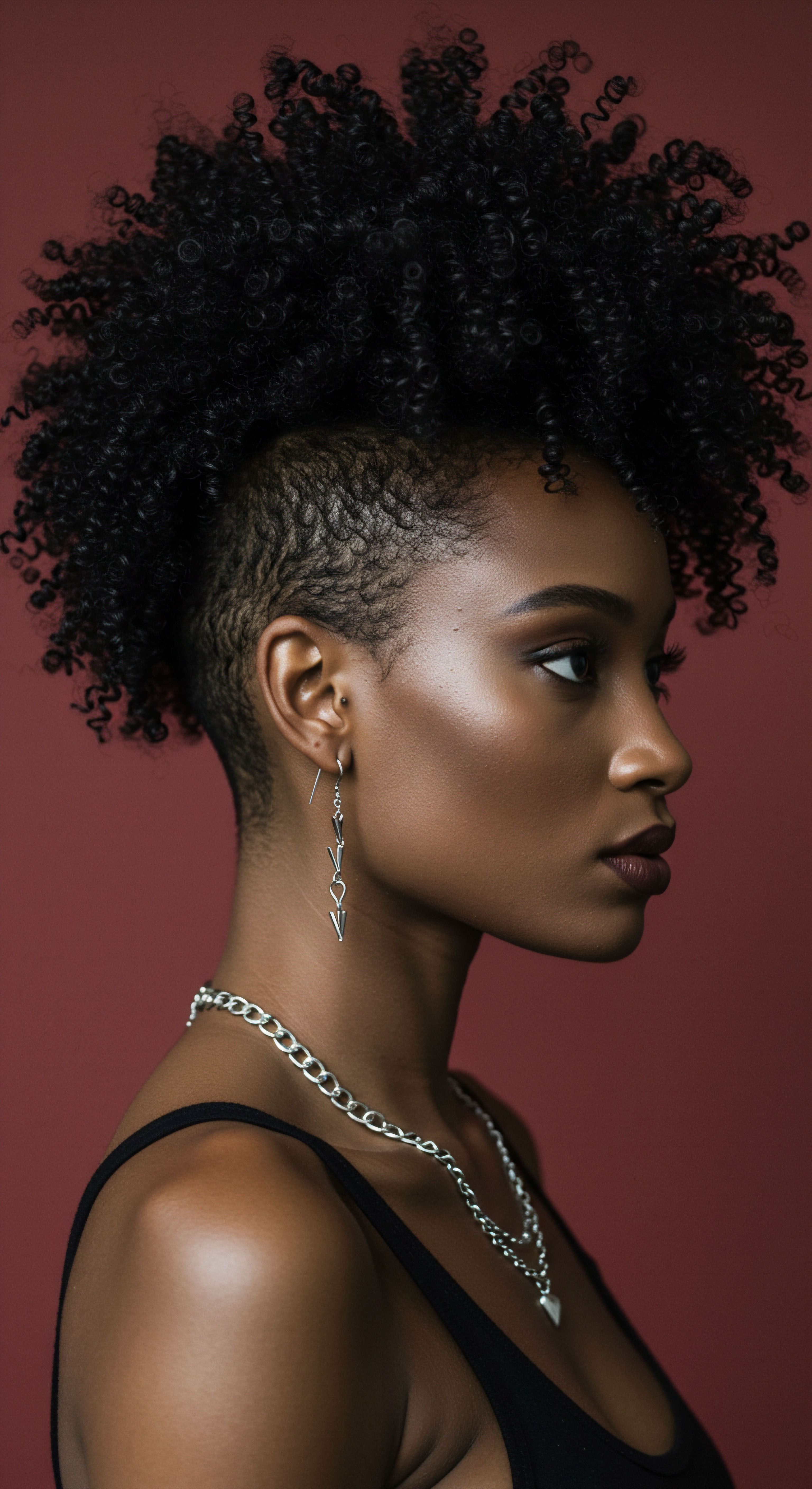
Advanced
At the advanced level, the meaning of Hair Curl Genetics transcends mere description, becoming a profound explication of its theoretical underpinnings, cultural complexities, and the cutting-edge scientific investigations that continue to unfold. This perspective offers a compound understanding, analyzing the interplay of biological, historical, psychological, and social factors that shape our relationship with textured hair. It is an interpretation grounded in scholarly rigor, providing maximum insight for experts, researchers, and those seeking a truly comprehensive grasp of this intricate subject.

The Molecular and Cellular Architecture of Curl
The precise formation of hair curl is a testament to sophisticated molecular and cellular choreography within the hair follicle. Beyond the macro-level observation of follicle shape, advanced research zeroes in on the asymmetrical distribution of keratin and keratin-associated proteins (KAPs) within the hair shaft’s cortex. In straight hair, these proteins are distributed relatively evenly, allowing for a symmetrical cylindrical structure.
In contrast, curly hair exhibits an uneven distribution, creating differential growth rates and tension across the hair shaft, compelling it to bend and twist. This asymmetry is not accidental; it is meticulously programmed by specific genes and signaling pathways during hair follicle development.
Key genetic players in this intricate process include TRICHOHYALIN (TCHH), which is critical for the formation of the inner root sheath (IRS) and its interaction with keratin filaments, directly influencing hair shape. Polymorphisms within this gene, particularly in populations of Northern European ancestry, have been linked to variations in hair texture. Further, studies have identified the involvement of a copper transporter protein CUTC and Keratin 74 (KRT74) in determining curl patterns, particularly in South African populations, revealing the localized genetic nuances across global ancestries. The ongoing elucidation of these genetic networks and their biochemical cascades provides a deeper specification of how curl patterns are precisely determined at the cellular scale, offering a foundation for future therapeutic and cosmetic innovations.
Hair curl arises from genetically programmed asymmetrical keratin distribution within the hair shaft, a complex interplay orchestrated by genes like TRICHOHYALIN, CUTC, and KRT74.
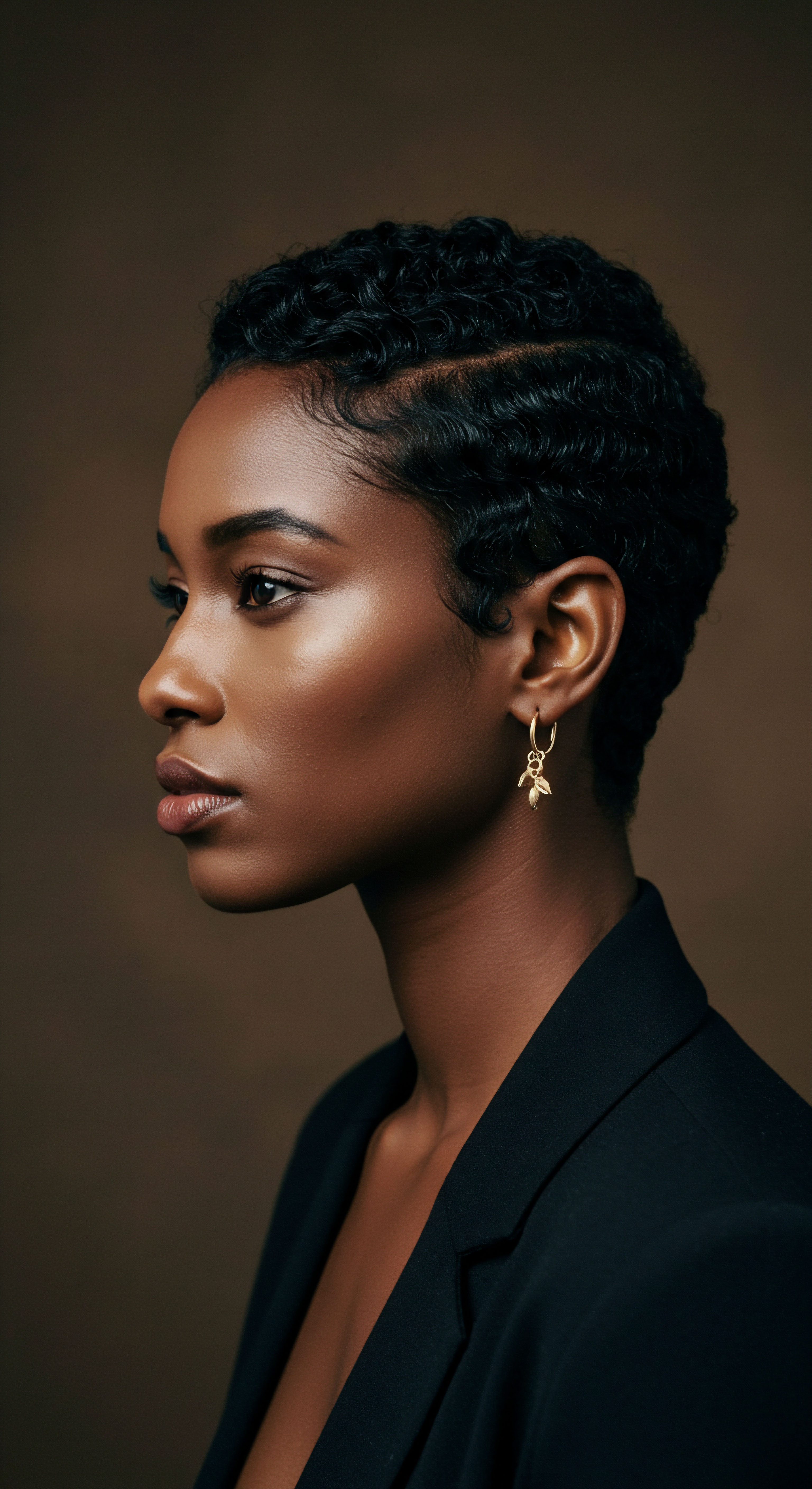
Evolutionary and Anthropological Delineations of Hair Curl
The distribution of hair curl patterns across human populations is not random; it bears the indelible marks of evolutionary adaptation and historical migrations. Early anthropological studies, often flawed by race-based classifications, attempted to categorize hair based on macroscopic features like straight, wavy, or curly, associating them with broad ethnic groups. However, contemporary understanding provides a more nuanced interpretation ❉ while certain curl patterns are more prevalent in specific populations, hair texture is a continuous trait, and significant variation exists within, not just between, these groups. For instance, genotyping results reveal that while 94.9% of Black individuals have curly hair, a notable 12.7% of Europeans and 12% of Asian individuals also possess curls, challenging simplistic racial categorizations.
The evolutionary significance of textured hair, particularly tight coils, is a compelling area of inquiry. Research suggests that tightly curled scalp hair evolved in early humans in equatorial Africa as a protective mechanism against intense solar radiation. This unique hair structure created an insulating layer, reducing heat gain from the sun and minimizing the need for evaporative cooling through sweating. This passive cooling mechanism is hypothesized to have played a critical role in facilitating the expansion of the human brain, allowing for thermoregulation without excessive water loss.
This evolutionary context provides a profound historical dimension to hair curl genetics, highlighting its adaptive value and linking it directly to human survival and development. The narrative of hair curl is thus deeply intertwined with the broader human story of adaptation and resilience.
A striking, often overlooked, aspect of hair curl genetics within a cultural context is the historical and ongoing bias embedded within scientific methodologies and societal perceptions. Traditional hair classification systems, such as the widely used Andre Walker Hair Typing System, have faced criticism for prioritizing looser curl patterns (Type 2 and 3) over kinky/coily (Type 4) textures. This bias extends into research, where studies have historically focused more on curly hair than coily hair, partly because curly hair is more prevalent and commercially viable.
Systematic exclusion of textured hair in scientific research, particularly in fields like neuroscience, exemplifies a pervasive racial bias impacting data inclusivity.
This preferential focus has tangible consequences. For example, in neuroscience research using methods like Electroencephalography (EEG), traditional protocols designed for straight hair often lead to the exclusion of individuals with thick, curly, or coily hair, as their hair may be deemed “too short” or incompatible with equipment. A study revealed that nearly half of Black women participants who declined to provide a hair sample in a research setting did so because their hairstyles (braids, twists, locs) would make accessing their natural hair difficult, requiring significant time and expense to undo and redo.
This demonstrates how racial bias, even if implicit, systematically limits the participation of diverse populations in scientific studies, leading to underrepresented samples and a body of knowledge that may not fully apply to Black communities. This critical observation underscores the urgent need for more inclusive research practices that acknowledge and accommodate the diverse realities of textured hair, moving beyond a history where hair texture was even used as a tool for racial segregation, as seen in historical instances where the ability to hold a pencil in one’s hair was used to classify individuals as “Native” or “Colored” in identity documents.

Advanced Care and Corporate Responsibility
From an advanced perspective, understanding hair curl genetics extends into the realm of corporate responsibility and product development. The profound meaning of this genetic knowledge for the textured hair community necessitates a paradigm shift in the cosmetic industry. Companies have a responsibility to move beyond superficial marketing and invest in rigorous scientific research that specifically addresses the unique biological and genetic properties of textured hair. This includes studying the specific lipid content differences (Afro-textured hair has higher overall lipid content but often exhibits dryness due to structural weakness and moisture loss) and disulfide bond arrangements that influence product efficacy and hair health.
The development of new-generation products should be guided by this advanced understanding, aiming for formulations that offer robust protection against damage, minimize moisture loss, and support the intrinsic strength of highly curved hair. This involves moving beyond generic “curl-friendly” claims to scientifically validated ingredients and delivery systems that cater to the specific needs dictated by hair curl genetics. This commitment to deep, research-driven product development, rather than merely adapting existing formulas, represents a long-term investment in the health and well-being of textured hair consumers globally. It also means actively dismantling the biases embedded in product categorization and marketing, ensuring that all curl patterns are equally celebrated and supported with appropriate, effective solutions.
Moreover, the advanced understanding of hair curl genetics informs educational initiatives within the beauty and trichology sectors. Professionals must receive comprehensive training that covers the genetic, biological, and cultural nuances of textured hair, moving beyond outdated classifications and towards a more holistic, empathetic approach. This education should encompass not only the science of hair structure but also the historical context of hair discrimination and the psychological impact of hair on identity. Such a comprehensive understanding allows for the provision of truly expert-driven care, fostering trust and empowering individuals to navigate their hair journeys with confidence and profound self-acceptance.
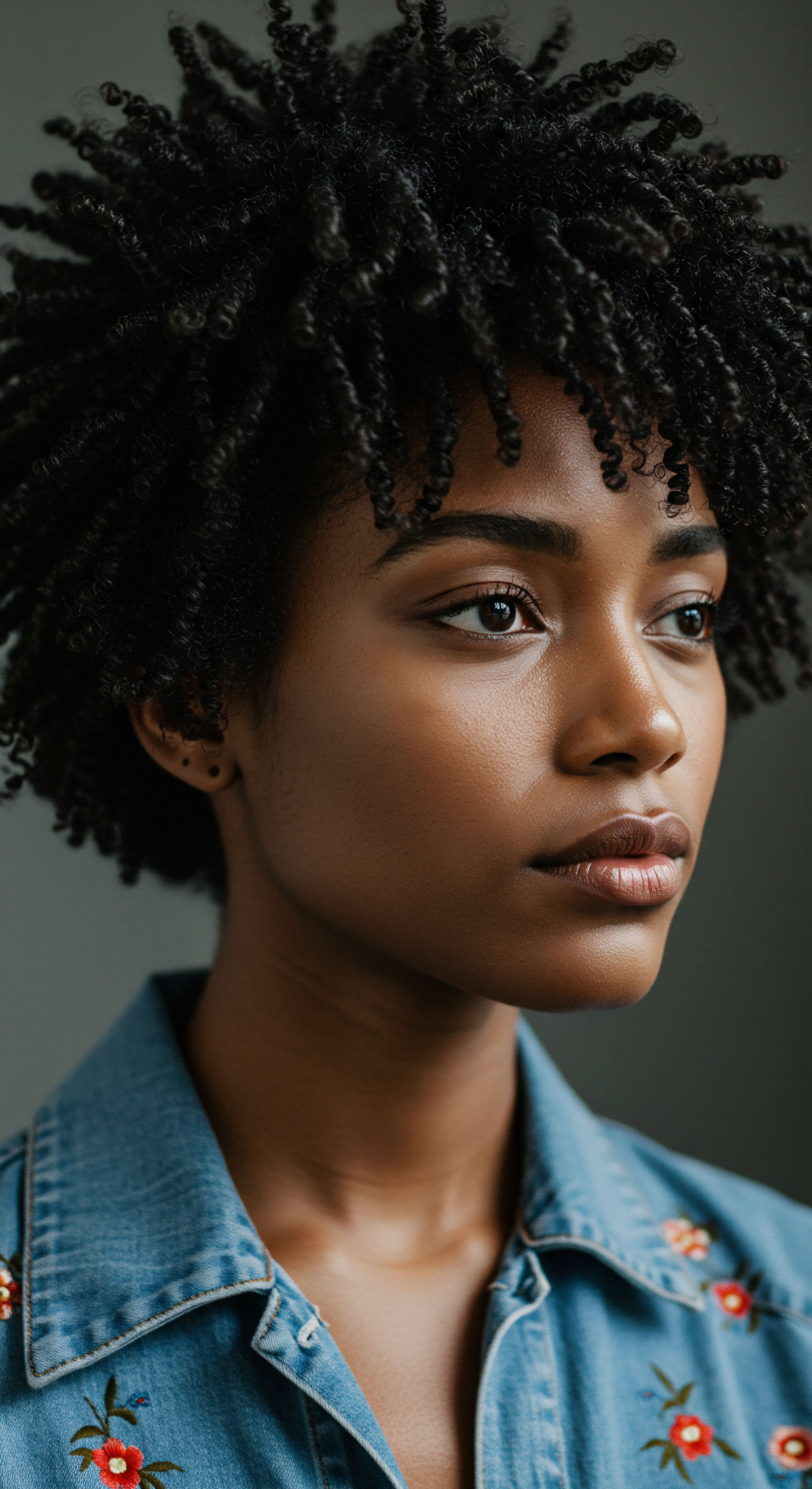
Reflection
The exploration of hair curl genetics invites us to contemplate the profound connection between our biological inheritance and our personal narrative. It reminds us that each coil, wave, and kink is a living testament to ancestral journeys, environmental adaptations, and the remarkable diversity of humanity. As we peel back the layers of scientific inquiry, we discover not just genes and proteins, but stories of resilience, cultural pride, and a deep-seated desire for belonging. The gentle understanding we seek to cultivate at Roothea is born from this realization ❉ our hair is more than just fibers; it is a profound expression of who we are, where we come from, and the beautiful paths we continue to forge.

References
- Bouillon, C. & Wilkinson, J. (Eds.). (2005). The Science of Hair Care (1st ed.). CRC Press.
- Bouillon, C. & Wilkinson, J. (Eds.). (2005). The Science of Hair Care, Second Edition. CRC Press.
- Chandrashekar, B. S. (2018). IADVL Textbook of Trichology. Jaypee Brothers Medical Publishers.
- Gamage, D. & Bouazza, A. (2021). The Genomic Variation in Textured Hair ❉ Implications in Developing a Holistic Hair Care Routine. MDPI.
- McMichael, A. J. (2018). Hair and Scalp Disorders ❉ Medical, Surgical, and Cosmetic Treatments, Second Edition. Barnes & Noble.
- McMichael, A. J. & Hordinsky, M. K. (Eds.). (2008). Hair and Scalp Diseases ❉ Medical, Surgical, and Cosmetic Treatments. Informa Healthcare.
- Montagna, W. & Ellis, R. A. (Eds.). (2013). The Biology of Hair Growth (1st ed.). Elsevier.
- Quinto-Sánchez, M. et al. (2019). Human hair and its evolution. CONICET.
- Saraswathy, K. N. Dabas, P. Kataria, S. Sachdeva, M. P. & Jain, S. (2022). Investigating the morphology and genetics of scalp and facial hair characteristics for phenotype prediction. Science & Justice, 63(1), 1–11.
- Tobin, D. J. (2019). The what, why and how of curly hair ❉ a review. Experimental Dermatology, 28(11), 1239–1249.
- Tobin, D. J. (2021). The Biology and Genetics of Curly Hair. ResearchGate.
- Webb, E. A. et al. (2022). Hair me out ❉ Highlighting systematic exclusion in psychophysiological methods and recommendations to increase inclusion. Frontiers in Neuroscience, 16, 959088.
- Yamaguchi, R. et al. (2008). A scan for genetic determinants of human hair morphology ❉ EDAR is associated with Asian hair thickness. Human Molecular Genetics, 17(8), 1017–1026.